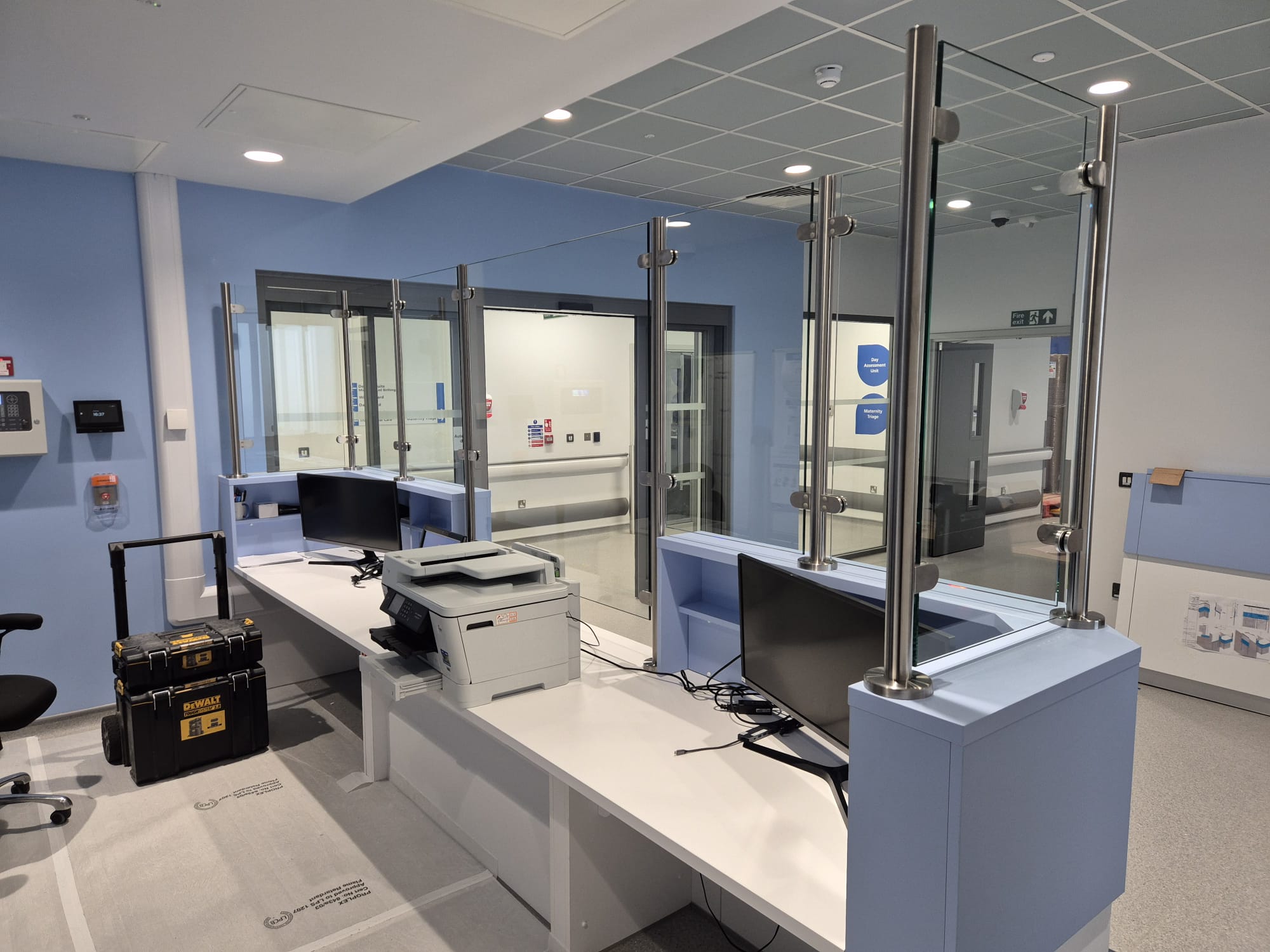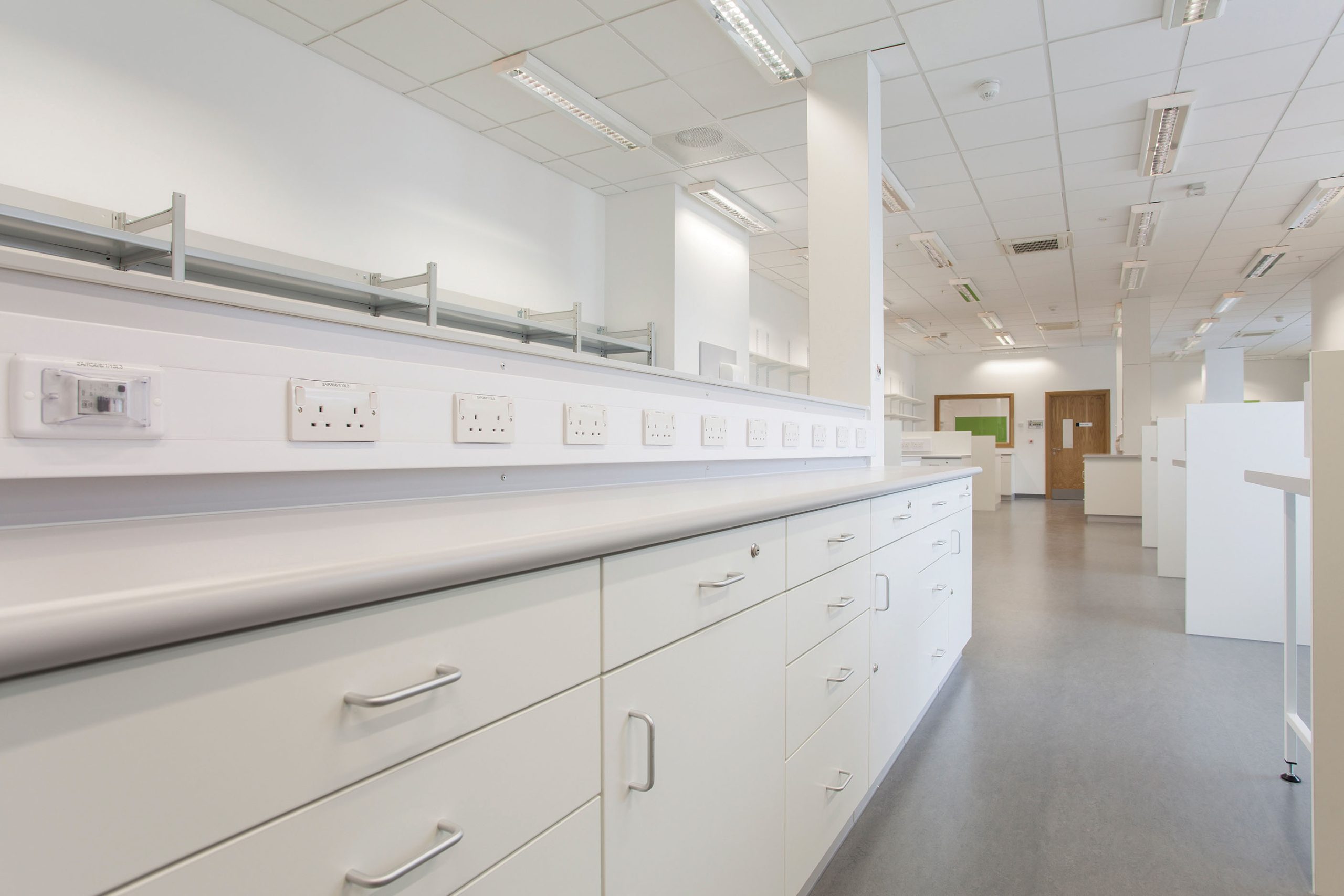The safety of NHS staff has become one of the most pressing challenges facing healthcare…

What a reception desk tells you about your hospital
Hospital reception desks play such a crucial role in creating a welcoming and efficient environment, that even the NHS has recognised their importance – understanding that good design features deliver the best possible experience for patients, staff and visitors, writes Tony Huggins, managing director of David Bailey Furniture.
For manufacturers like David Bailey Furniture, who have been providing fitted furniture solutions for hospitals for more than 40 years, there is now more emphasis than ever on the importance of reception areas as accessible hubs, whether they are located in public spaces or wards.
With more emphasis on accessibility, the NHS recommends that reception desks be designed to cater to patients and visitors with disabilities, such as wheelchair users as well as the able bodied. The desks should be at an appropriate height and have clear floor space to ensure that wheelchair users can easily access them. Additionally, the desks should also be designed to cater to people with hearing and visual impairments. This can be achieved through the use of hearing loops, Braille signage, and clear and large print.
Another important design feature for reception desks in hospitals is their size and layout. A well-designed reception desk should be large enough to accommodate multiple staff members at the same time. The desk should also be designed in a way that allows staff to move around freely and have easy access to computers, phones, and other necessary equipment.
The NHS recommends that reception desks be designed with a U-shaped configuration, which allows staff to easily access all sides of the desk. In addition to accessibility and size, the appearance of a reception desk is also important. They should be designed to create a welcoming and professional environment, one that creates a calming and relaxing atmosphere.
The reception desk in a healthcare facility serves as the first point of contact for patients and visitors, providing a range of services, including scheduling appointments, answering queries, and collecting personal information. However, it is also a vulnerable location for data breaches.
With constant traffic, people come up to the reception desk to discuss their visit with the receptionist for at least a minute, providing opportunities for cybercriminals to gain access to sensitive data. Therefore, the height and shape of the reception desk play a critical role in ensuring the security and privacy of personal information.
One of the primary concerns with reception desks is the visibility of information. Patients and visitors often provide their personal details, including their name, address, date of birth, and social security number, which can easily be seen by others standing nearby. Additionally, patients may discuss sensitive medical conditions, such as mental health, sexual health, or addiction, that must be kept confidential. Therefore, it is essential to design reception desks that offer privacy and discretion, preventing unauthorized access to personal information.
One way to address this issue is to use a reception desk that is high enough to prevent anyone from seeing the computer screen or paperwork on the desk. Ideally, the height should be adjusted to match the eye level of the receptionist, making it easier for them to work while maintaining privacy. Additionally, the desk should be positioned away from the main entrance to avoid foot traffic, noise, and interruptions. This will not only improve privacy but also help create a more welcoming and comfortable environment for patients.
Another factor to consider is the shape and design of the reception desk. Modern healthcare facilities often use open-plan designs that incorporate natural light and comfortable seating arrangements. However, this can make it challenging to maintain privacy, especially if the reception area is visible from the waiting room or other public areas.
David Bailey Furniture work closely with architects and hospitals to achieve such an environment, offering a choice of soft colours and bespoke design, but while the NHS has provided guidance on the best features for reception desks, a recent study published in the British Medical Journal found that the designs in hospitals varied widely in terms of accessibility, size, and appearance.
Many hospitals did not meet the necessary standards for accessibility, with some desks being too high for wheelchair users to reach. Additionally, according to the article, some hospitals had cluttered and poorly lit reception areas, which created a stressful environment for patients and visitors – a situation which is gradually changing as NHS Trusts update buildings.
It is now widely understood that reception desks are an essential component of any hospital, serving as the central hub for patients, visitors, and staff. These desks frequently operate 24/7.
It means that the importance of reception desks in a hospital environment cannot be overstated. They are the first point of contact for patients and visitors, setting the tone for their entire experience. A well-designed reception desk can create a welcoming atmosphere, ease anxiety, and provide a sense of order and efficiency. On the other hand, a poorly designed desk can lead to confusion, frustration, and a negative perception of the hospital.
There are different types of reception desks used in hospital areas, depending on the location and function. For example, the reception desk in the emergency department is designed to handle urgent situations, with features such as triage areas, telephones, and direct access to the ambulance bay. The reception desk in outpatient clinics may be more focused on appointment scheduling, medical records, and payment processing.
All these factors present a challenge for manufacturers such as David Bailey Furniture, who recognise the individual needs of different NHS Trusts who have multiple reception areas. What works in a public space is different to that of a ward where busy staff will use localised reception areas as an essential hub to serve patients.
That’s why every new reception desk is bespoke to meet the particular needs of each hospital in terms of colour, finished design and a host of additional features that might be specified – because it is the desk that sets the tone for the entire reception area – and how patients and staff will ultimately view the public face of that hospital.








